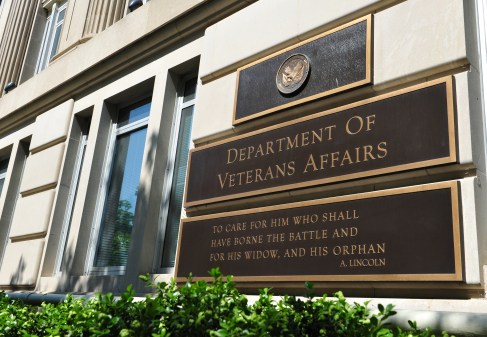The VA is developing new metrics for measuring its digital transformation

The Department of Veterans Affairs’ IT office is developing a new set of metrics to measure the agency’s success managing a cloud-driven digital transformation across several of its most important systems and missions.
CIO James Gfrerer said Wednesday his office is close to launching a “balanced scorecard” to measure the success of the VA‘s various digital transformation efforts, to include the modernization of its electronic health record, medical logistics supply, human resources and financial management systems.
He said at the AFCEA Bethesda Health IT Summit he’s headed to Capitol Hill later this week to brief members of Congress on the scorecard. (The idea of a “balanced scorecard” comes from business management, and it tracks financial and non-financial measurements together.)
“We are about 75% to 80% complete on our balanced scorecard that supports our digital transformation strategy,” Gfrerer said. “So we’re going to get a lot more focused around those measures, those metrics, those outcomes around the specific projects and start to be a bit more deliberate on what programs are succeeding or not.”
Gfrerer acknowledged VA’s “checkered past in terms of project development and releases” around major IT systems. The department has been working for decades, for instance, to modernize its digital health systems and retire the legacy Veterans Information Systems and Technology Architecture (VistA) platform. The new scorecard, he said, will help the VA assess its progress and make decisions more quickly if something isn’t working as intended. It could play a big role as the department goes live with its Cerner-based Electronic Health Record Modernization program at VA hospitals in the Pacific Northwest in March.
On top of this, VA, like many other federal agencies, has adopted DevSecOps and “product-line management” for its technology delivery. In the next year, Gfrerer said, “that’s going to create additional levels of accountability” for the department’s more than $4 billion IT budget.
VA’s enterprise cloud progress
In addition to those major system overhauls, the VA is pushing broadly to migrate its applications to its enterprise cloud environment.
Gfrerer said by 2024 about 350 of the department’s applications and systems — about half of its portfolio — will reside in that enterprise cloud. “That is not about cost savings, that’s about capabilities delivery,” he said, pointing to his department’s troubles with reliability and the effectiveness of its current on-premise systems. For instance, before moving VA’s internal single sign-on to the cloud — an app that every department system depends on — it was only available about 70 percent of the time.
“That’s horrendous,” he said.
With so many applications awaiting migration, the department has a “whole metric and methodology for how we score and prioritize applications in moving to the cloud,” Gfrerer said. “If something is in a particular aging environment or is suffering from some other software or hardware maladies, we’re going to probably put it high in the queue in terms of getting it into a more accessible and responsive infrastructure in the cloud.”
In migrating to the cloud, it’s also an opportunity to transition services that have historically been done or supported in-house to a managed service provider.
“One of the things we stress is we want to outsource and take away those things that are commoditized and we want to in-source complexity,” Gfrerer said. “The workforce that we have … we want them to stay focused on high-value work.”
Something like endpoint provisioning shouldn’t be the work of a VA employee, he said.
“Provisioning an endpoint these days is the 21st-century version of ditch-digging. Why are we doing that when we have truly more meaningful, high-value work?”





